
Psychcast
Medscape Professional Network
All episodes
Best episodes
Seasons
Top 10 Psychcast Episodes
Goodpods has curated a list of the 10 best Psychcast episodes, ranked by the number of listens and likes each episode have garnered from our listeners. If you are listening to Psychcast for the first time, there's no better place to start than with one of these standout episodes. If you are a fan of the show, vote for your favorite Psychcast episode by adding your comments to the episode page.

Thinking through the medical ethics of COVID-19 with Dr. Rebecca Brendel and Dr. Allen Dyer
Psychcast
02/10/21 • 46 min
Rebecca W. Brendel, MD, JD, and Allen R. Dyer, MD, PhD, join guest host Carol A. Bernstein, MD, to discuss the ethical challenges that have been occurring during the COVID-19 pandemic.
Dr. Brendel is director of law and ethics at the Center for Law, Brain, and Behavior at Massachusetts General Hospital, Boston. She also serves as director of the master of bioethics degree program at Harvard Medical School, Boston. Dr. Brendel has no disclosures.
Dr. Dyer is professor of psychiatry and behavioral sciences at George Washington University, Washington. He also serves as vice chair for education at the school of medicine and health sciences. Dr. Dyer has no disclosures.
Dr. Bernstein, a past president of the American Psychiatric Association, is vice chair for faculty development and well-being at Montefiore Medical Center/Albert Einstein College of Medicine, New York. She has no disclosures.
Take-home points
- Medical ethics often deal with decisions between doctors and patients, but during the COVID-19 pandemic, the medical community has been forced to reckon with ethics on a population scale. Examples of ethical challenges include issues of scarcity, justice, transparency, and navigating distrust of the medical system.
- In the beginning of the pandemic, individuals such as Dr. Brendel and Dr. Dyer participated in ethical planning so that hospital systems would be prepared to deal with scarcity of resources that could result in some individuals going without lifesaving interventions. During times of scarcity, transparency and accountability are necessary, because the community will ask questions about the fairness and justice of specific outcomes.
- The philosophy of utilitarianism is a reason-based decision-making model that strives to maximize the greatest good for the greatest number, and it has been commonly used as a template for ethical discussions during the pandemic. Yet, utilitarianism calculus is complicated by questions of how to define “good” and the challenge of accurately predicting the outcomes.
Summary
- In situations of urgency, demand, and scarcity, ethics usually turns to utilitarianism with the intention of maximizing the greatest good for the greatest number. Inevitably, people or populations are harmed. Especially in the beginning of the COVID-19 pandemic, American society grappled with the issue of scarcity and allocation of medical resources, ranging from personal protective equipment, ventilators, medical staff, ICU space, and the vaccine.
- Now we must think about the ethical decisions influencing COVID-19 vaccination, including weighing the risks and benefits of who gets the vaccine and when – and how certain vaccine schedules forestall the spread in the population. For example, institutionalized individuals are at great risk of contracting COVID-19, yet society debates the “good” of vaccinating elderly in nursing homes versus incarcerated individuals. Question of defining good and grappling with the consequences are present throughout the entire vaccination algorithm. Communities contend with the question of who in their ranks are essential workers: Health care workers? Teachers? Restaurant staff? Factory workers?
- Justice and transparency are commonly discussed ethical principles, especially when we think about the algorithms created to allocate resources. Transparency is required to foster trust in the public health system, and actors within the system must demonstrate their accountability through being honest about the evidence behind policy decisions, following set parameters, and acknowledging historical reasons for distrust.
- The pandemic has pushed society to think about the ethics of community solidarity and reflect on governmental and individual responsibility of protecting the health and well-being of the community. As the pandemic ravaged the U.S. economy and further disadvantaged already vulnerable communities, we must use this opportunity to reexamine the ethics of how health care is distributed in the United States, and work toward a just and equitable system.
References
Ethics and COVID10: Resource allocation and priority-setting. 2020 World Health Organization.
AMA Journal of Ethics. COVID-19 Ethics Resource Center.
Emanuel EJ et al. N Engl J Med. 2020 May 21. doi...
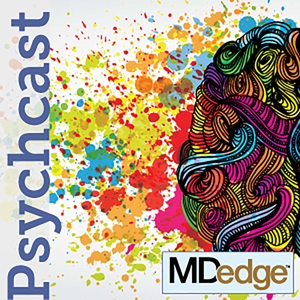
01/15/20 • 21 min
Alberto J. Espay, MD, MSc, conducts a Masterclass lecture on treating patients with Parkinson’s-related psychosis from the Psychopharmacology Update in Cincinnati. The meeting was sponsored by Global Academy for Medical Education and Current Psychiatry.
Dr. Espay is professor of neurology at the University of Cincinnati. He also serves as director of the James J. and Joan A. Gardner Family Center Research Chair for Parkinson’s Disease and Movement Disorders.
And later, in the “Dr. RK” segment, Renee Kohanski, MD, asks you to think about some of the complex issues tied to getting treatment for people who are both homeless and have serious mental illness.
* *
Treatment of Parkinson’s-related psychosis
- Psychosis related to Parkinson’s disease (PD) is a common reason for hospitalization, institutionalization, and decline of patients with PD. The diagnosis of PD is required before the development of psychosis to diagnose patients with Parkinson's-related psychosis. Parkinsonism that appears after development of psychosis is Lewy body dementia.
- Many factors influence the development of psychosis in PD. Extrinsic factors include medical illnesses or metabolic derangement causing delirium with psychosis; nonessential dopaminergic medications such as ropinirole and selegiline; anticholinergic medications such as benztropine, amantadine, and bladder antispasmodics; and insomnia. The last resort for treatment of psychosis is levodopa because patients will experience motoric decline and loss of functioning.
- There are several mechanisms for psychosis to occur via the dopaminergic, serotonergic, and glutamatergic pathways; thus, three neurotransmitters – serotonin, dopamine, and glutamate – can be manipulated to treat psychosis. Quetiapine, clozapine, and pimavanserin are the three antipsychotics safe for use in Parkinson’s disease.
- Clozapine is infrequently used, because of the risk of neutropenia and required blood work monitoring, but evidence shows that the benefits usually outweigh the risks of motor decline.
- Quetiapine is commonly used, because it has a favorable effect on sleep and psychosis, but it negatively affects the movement disorder of Parkinson's disease.
- Pimavanserin (Nuplazid), the only medication FDA approved for hallucinations and delusions associated with psychosis in Parkinson’s disease, is highly selective for the 5-HT2A receptor as both an inverse agonist and antagonist.
- Primary adverse effects are peripheral edema and confusion, but overall the adverse effects profile is similar to that of placebo. In the pimavanserin clinical trials, a subset of patients worsened and experienced more visual hallucinations. In addition, pimavanserin can prolong the QT interval, so patients taking other QT-prolonging medications or who have cardiac comorbidities should be monitored with an EKG.
- Post hoc data analysis from as pivotal phase 3 study suggests that patients with cognitive impairment and dementia may receive more benefit from pimavanserin.
* *
References
Cruz MP. Pimavanserin (Nuplazid): A treatment for hallucinations and delusions associated with Parkinson’s disease. P T. 2017 Jun;42(6):368-71.
Cummings J et al. Pimavanserin: Potential treatment for dementia-related psychosis. J Prev Alzheimers Dis. 2018;5(4):253-8.
Huot P. 5HT2A receptors and Parkinson’s disease psychosis: A pharmacological discussion. Neurodegenerative Disease Management. 2018 Nov 19.
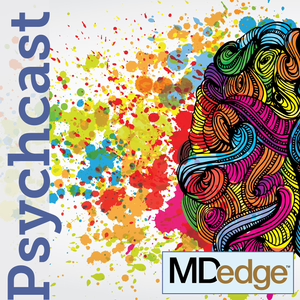
01/08/20 • 32 min
Michael A. Norko, MD, professor of psychiatry at Yale University in New Haven, Conn., spoke with Lorenzo Norris, MD, MDedge Psychiatry editor in chief, about incorporating patients’ spiritual and religious histories into psychiatric evaluations.
Dr. Norko, lead author of a paper exploring whether religion is protective against suicide, sat down with Dr. Norris at the 2019 fall meeting of the Group for the Advancement of Psychiatry, or GAP.
Evidence, questions to consider about religion and spirituality
- Various spiritual and religious factors are linked to decreased rates of suicide behaviors and attempts, including weekly attendance to worship services, personal beliefs about the preciousness of life, and commitment to a faith practice. Which specific parts of religious and spirituality are protective? Are the protective factors the social connection or the spiritual connection alone?
- Those who attend worship services weekly are at lower risk of suicide. It’s unclear whether weekly attendance is a proxy for the social connectedness or for the level of internalization of the religious beliefs.
- Commitment to a faith is measured by a consistent and strong belief in the faith tradition. Just because someone says they belong to a faith tradition does not automatically mean a person is at lower risk of suicide.
- Strong alignment with the faith also is protective. Alignment is different from commitment, because if patients are doubting or their personal beliefs conflict with long-held religious traditions, this can increase patients’ suicide risk.
Questions to ask about spirituality and religion in clinical practice
- A spiritual and religious history is essential to a psychiatric evaluation, because asking about religion lets the patient know that this is a welcome topic. Examples of questions a clinician can ask include: “Is there any faith tradition that you belong to? How important is your faith or beliefs? Is there anything about your religious beliefs you think are important to your mental health treatment?”
Difficult areas to navigate with religion and spirituality
- Lack of expertise or personal experience with religion can be a barrier. It is important to remember that patients usually welcome curiosity about their religious beliefs and emotional lives. Clinicians need not be experts in religion, but they can be alert to the salient values and notice whether the person is struggling with certain beliefs. Clinicians also can encourage patients to talk to their clergy.
- When someone asks a clinician, “What is your faith practice?” this can be approached as an informed consent question. The clinician can ask how talking about their own beliefs or faith practices will deepen and help the therapeutic work of the patient.
- If a person is feeling let down by a certain failing of their religious community, therapy is a good place to explore what strengths and succor they had received from their religion. Therapy also can be used to guide patients toward additional places, or even substitutes, to meet their needs.
- Understanding patients’ faith background and beliefs can help clinicians reframe certain crises, especially if the psychiatrist and therapist have talked discussed those crises with patients over time. It’s more useful to understand patients’ faith before the crisis, because grasping for a spiritual or religious answer at the last moment can feel inauthentic.
References
Norko et al. Can religion protect against suicide? J Nerv Ment Dis. 2017. Jan;205(1):9-14.
Kruizinga R et al. Toward a fully-fledged integration of spiritual care and medical care. J Pain Symptom Manage. 2018 Mar;55(3):1035-40.
Thomas LP et al. Meaning-centered psychotherapy: A form of psychotherapy for patients with cancer. Curr Psychiatry Rep. 2014 Oct;16(10):488.
Lawrence RE et al. Religion and suicide risk: A systematic review. Arch Suicide Res. 2016;20(1):1-21.
D’Souza R, George K. Spirituality, religion and psychiatry: its application to clinical practice. Australas Psychiatry. 2006 Dec;14(4):408-12.
FICA Spiritual H...

11/20/19 • 37 min
Jack Drescher, MD, returns to the MDedge Psychcast, this time to discuss ethical issues raised by the treatment of gender-variant prepubescent children with MDedge Psychiatry editor in chief Lorenzo Norris, MD. The two spoke at the 2019 Group for Advancement in Psychiatry (GAP) meeting in White Plains, N.Y.
Dr. Drescher is a Distinguished Life Fellow of the American Psychiatric Association, past president of GAP, and a past president of the APA’s New York County Psychiatric Society. He has a private practice in New York.
And later, in the “Dr. RK” segment, Renee Kohanski, MD, says artificial intelligence is much more powerful than we imagined.
* *
Help us make this podcast better! Please take this short listener survey: https://www.surveymonkey.com/r/podcastsurveyOct2019
* *
Three approaches used to address gender-variant children
Despite the acceptance of gender dysphoria as a diagnosis with standardized treatments, the treatment of gender-variant prepubescent children remains a controversial area. There are several treatment approaches regarding how and when a child should have a social transition to their desired gender.
- The oldest treatment approach is based on research that shows that most children will grow out of their gender dysphoria when the therapies applied help the children get used to living in the body of their assigned gender. Essentially, this approach discourages public or private social transition.
- The Dutch Protocol is based on research that shows the difficulty in predicting which children will continue to have gender dysphoria and which will not. Some children will have persistent gender dysphoria and become transgender; some may become homosexual; and others may identify with their own biological sex. The Dutch approach encourages children to have cross-gender interests and to privately identify with their desired gender, but there is not a public social transition.
- Families and clinicians use watchful waiting to see whether the gender dysphoria persists. It’s based on the idea that one cannot predict the future and so parents accept the child wherever they are.
- The final approach focuses on social transition without a medical or surgical treatment. Therefore, if the child’s gender dysphoria desists, they can “detransition,” since there was no medical intervention.
- The gender-affirmative approach, mostly found in the United States, presupposes that it is possible to identify which children will persist in their transgender presentations and encourages a public, social transition to living as their identified gender. In case the child “makes a mistake,” they can transition back to their biological sex.
- A social transition occurs when a child, with the help of clinicians, explains to the family that they believe the gender dysphoria is going to last and that the child should be allowed to present publicly as their desired gender. This includes communicating with the school, family, and friends to help the child to be treated respectfully in the gender they desire.
Treatments for gender-variant children
- Puberty suppression is a medical treatment used by physicians in all three approaches. These medications block sex hormone action and are used to delay puberty and prevent the development of undesired secondary sex characteristics of the biologic sex. Adolescents frequently experience anxiety, depression, even suicidal ideation during this period because they feel pressured to choose their gender and avoid developing the secondary sexual characteristics of their biological sex.
- Social changes are outpacing the science. More frequently, children show up at gender clinics already socially transitioned by their parents; these children outnumber the subjects in the persist and desist literature. Regardless of the approach used, parents and clinicians should try to act on the exigent circumstances to relieve the distress of the child.
- Patients who are transitioning should be referred to a specialist, because this is a sensitive topic and treatment requires expertise.
References
Shumer DE et al. Advances in the care of transgender children and adolesc...

10/30/19 • 44 min
Mark S. Gold, MD, joins Lorenzo Norris, MD, host of the MDedge Psychcast and editor in chief of MDedge Psychiatry, to discuss the intersection between the rise in suicide and the opioid crisis in the United States.
Dr. Gold is adjunct professor of psychiatry at Washington University in St. Louis. He also serves on the editorial advisory board of MDedge Psychiatry. Previously, Dr. Gold served as distinguished professor and chairman of the psychiatry department at the University of Florida, Gainesville.
* *
Help us make this podcast better! Please take this short listener survey: https://www.surveymonkey.com/r/podcastsurveyOct2019
* *
Timestamps:
- This week in Psychiatry (01:11)
- Interview with Dr. Gold (03:40)
This week in Psychiatry
Demeaning patient behavior takes an emotional toll on physicians by Steve Cimino
Suicide and the opioid crisis
- In 2017, more than 70,000 people died from overdose, and 47,600 of those deaths involved prescription or illicit opioids. Most coroners list the deaths as “accidental” unless there is a suicide note or the deceased spoke about an intent to die.
- Chronic opioid self-administration changes the brain. The person becomes less high and more depressed over time.
- The prevalence of depression is at least 50% in those with opioid use disorder. Some experts estimate that up to 30% of opioid overdoses are intentional and count as suicide. A person with opioid use disorder has 13 times the risk of attempting and completing suicide, compared with the general population.
- Until recently, psychiatric evaluations and suicide assessments were not routine in the chain of events from opioid use to overdose to transition to medication-assisted treatment (MAT).
- People whose overdoses are reversed by naloxone are prime candidates to ask whether an overdose was accidental. In an emergency department in Flint, Mich., 30% of overdose patients rescued with naloxone described their overdose as a suicide attempt.
- Although some people revived with naloxone are angry, it is important to consider irritability and anhedonia that come from giving an opioid antagonist during a high.
Future of treatments in the opioid crisis
- Much is still unknown. For example, there are no MAT options for either stimulant or cannabis use disorders, which are implicated in the morbidity and mortality of the overdose crisis. More research is needed to determine how long patients should be on MAT and when their brains “reset” after addiction.
- Also, in the pipeline is advanced imaging showing how drug use changes a person’s neurocircuitry and genetics. The OPRM1 gene, for example, is a polymorphism whose presence predicts whether a person is more likely to become addicted after their first use of opiates and determines treatment resistance to recovery.
- In the next year, efforts aimed at preventing overdoses and investigating the risk and rates of suicide are likely to continue.
- If every patient with a high-dose opioid prescription were offered naloxone, nearly 9 million more naloxone prescriptions could have been dispensed in 2018. So, we might see state-level policies that seek to increase naloxone prescriptions to patients based on morphine equivalents.
- Looking beyond overdoses and relapse prevention, the National Institute on Drug Abuse (NIDA) has identified novel targets focused on regenerating the reward system in order to return the brains of people with addictions to premorbid function after years of abuse.
References
Volkow N and Gordon J. Suicide deaths are a major component of the opioid crisis. NIDA. 2019 Sep 19.
Oquendo MA and Volkow ND. Suicide: A silent contributor to opioid-overdose deaths. New Engl J Med. 2018;378:1567-9.
5-point strategy to combat the opioid crisis. U.S. Department of Health & Human Services.
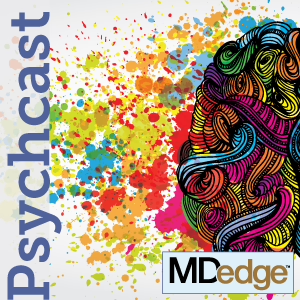
Best of: Substance Use Disorders
Psychcast
12/26/18 • 61 min
In this episode, we revisit some of our best content on substance use disorders.
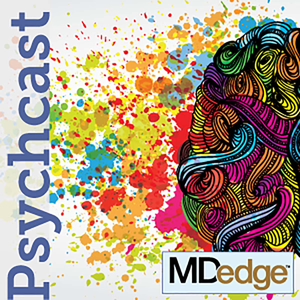
Jack Rozel II: Pittsburgh Shooting
Psychcast
11/21/18 • 27 min
In this episode of the MDedge Psychcast, Jack Rozel, MD, comes back to the show to discuss how things are in Pittsburgh following the shooting at the Tree of Life Synagogue.
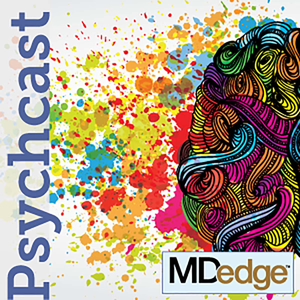
08/09/18 • 26 min
Lorenzo Norris, MD, editor in chief of MDedge Psychiatry, sits down with Igor Galynker, MD, PhD, to talk about an evaluation model he and his team created aimed at assessing the risk of imminent suicide. Dr. Galynker also discusses ways clinicians can assess their own personal emotional responses to patients who are at risk.

05/05/21 • 27 min
Craig Chepke, MD, speaks with Lorenzo Norris, MD, about changes he made to his practice during the COVID-19 pandemic, and plans to make some of those changes permanent.
Dr. Chepke is a psychiatrist in Huntersville, N.C., and adjunct associate professor at Atrium Health and adjunct assistant professor at the University of North Carolina at Chapel Hill. He disclosed serving as a consultant and speaker for Otsuka and Janssen, and as a speaker for Alkermes.
Dr. Norris is associate dean of student affairs and administration at George Washington University, Washington. He has no disclosures.
Take-home points
- Dr. Chepke discussed his strategies for adapting his practice to the restrictions of the pandemic. He engaged in shared decision-making with patients when modifying his practice, including starting a drive-through pharmacotherapy clinic.
- To ensure that patients continued to have access to treatments such as long-acting injectable antipsychotics and esketamine, Dr. Chepke created a system in which patients could drive up to his clinic to have the medication administered. Because esketamine requires a 2-hour monitoring period after administration, he adapted the safety protocol.
- After patients received their intranasal spray dosage, they would complete the monitoring period in their car in the parking lot outside of his office, which was close enough to the clinic for Dr. Chepke to physically observe the patient, and to monitor vital signs wirelessly via a Bluetooth-enabled blood pressure cuff.
- Throughout the pandemic, Dr. Chepke found ways to care for his patients’ physical and mental health. He also adopted technologies that help him monitor his patients' vital signs and glucose levels.
- Especially while focusing on treatment-resistant psychiatric illness, Dr. Chepke invites family members to participate in evaluation and treatment. He uses this approach because he realizes that effective treatment must involve the system in which the individual exists.
- Dr. Chepke and Dr. Norris discussed ways in which clinicians can extend hope to their patients through flexibility and innovation, especially throughout the pandemic. Providing hope to patients demonstrates belief in a better future.
Reference
Chepke C. Current Psychiatry. 2020 May;19(5):29-30.
* *
Show notes by Jacqueline Posada, MD, associate producer of the Psychcast; assistant clinical professor in the department of psychiatry and behavioral sciences at George Washington University, Washington; and staff physician at George Washington Medical Faculty Associates, also in Washington. Dr. Posada has no conflicts of interest.
For more MDedge Podcasts, go to mdedge.com/podcasts
Email the show: [email protected]
Show more best episodes

Show more best episodes
FAQ
How many episodes does Psychcast have?
Psychcast currently has 182 episodes available.
What topics does Psychcast cover?
The podcast is about Addiction, Pharmacology, Health & Fitness, Psychology, Mental Health, Medicine, Therapy, Podcasts, Science and Psychiatry.
What is the most popular episode on Psychcast?
The episode title 'Creative approaches to treatment during the COVID-19 pandemic with Dr. Craig Chepke' is the most popular.
What is the average episode length on Psychcast?
The average episode length on Psychcast is 29 minutes.
How often are episodes of Psychcast released?
Episodes of Psychcast are typically released every 7 days.
When was the first episode of Psychcast?
The first episode of Psychcast was released on Apr 17, 2018.
Show more FAQ

Show more FAQ
